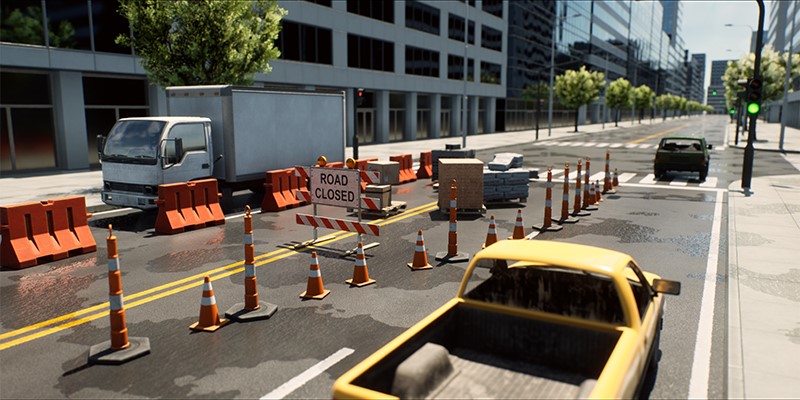AWS for Industries
Create 3D content for simulation using Ambit

Near-real-time 3D simulation has become an essential tool in the development of robots and autonomous vehicles. As an augmentation to real-world testing, simulation helps developers to test the sensing capability and behavior of their systems against a wider range of potential real-world scenarios.
To test with confidence, developers and scientists want to generate the widest possible range of environments, obstacles, and conditions that their systems might encounter in the real world. However, these customers have told us that producing all that content can be a significant challenge. Creating 3D content for simulation requires specialized 3D skills, complex 3D modeling tools and workflows, and investment of significant time. We listened and set about simplifying the creation of this type of content for our customers.
Today, at Amazon Web Services (AWS), we’re happy to announce the release of AWS Ambit Scenario Designer for Unreal Engine 4 (Ambit), a suite of tools to streamline 3D content creation at scale for autonomous vehicle and robotics simulations—and other near-real-time 3D applications. Using Ambit, users can create 3D environments and widely varied simulation scenarios in a fraction of the time required by traditional methods, all without requiring specialized 3D skills.
Ambit is implemented as an open-source plugin for Unreal Engine 4 (UE4), a free 3D development environment from Epic Games. Although the Ambit tools are based on UE4, the 3D content and scenarios you create using Ambit can be exported as Graphics Language Transmission Format (glTF) and JSON data for use with any simulator or 3D engine you choose.
Explore concepts and features
From procedural placement of obstacles to automatic generation of whole cities, using Ambit can help you quickly create the 3D environments and scenarios you need for robust 3D simulations.
World generation: Automatically generate building and road geometry from OpenStreetMap data. Use nearly any location in the world as the basis for your 3D environment.

Obstacle placement: Quickly populate your 3D worlds with stationary objects and vehicles using simple rules-based tools. Use randomness parameters to create virtually endless variations with ease.
Below, the object placement tools from Ambit are used to define paths and boundaries (top) for the automatic placement of various objects (bottom).
Environment effects: Preview how time of day and weather conditions will impact the scenarios you create using the drop-in environmental effects system from Ambit

Scenario generation: A scenario is the encapsulation of the world, obstacles, time of day, and weather conditions for a single simulation. Scenarios are exported from Ambit as JSON-formatted text files that can be used in your own simulators and pipelines. Export individual scenarios manually, or use Ambit to automatically generate hundreds of scenario permutations based on parameters you control.
The layout of the construction zone below was created using obstacle placement tools from Ambit. Then, variations were autogenerated as individual scenarios.

Get started
To try Ambit yourself or to learn more about its capabilities, visit the project’s GitHub page. There you’ll find an extensive User Guide, the downloadable Ambit UE4 plugin, and the full source code.
It’s early days for Ambit, and we’re excited to get your feedback on this new project and your ideas for where it should go in the future. Share your feedback and suggestions on our GitHub Issues page.
Happy world building.
